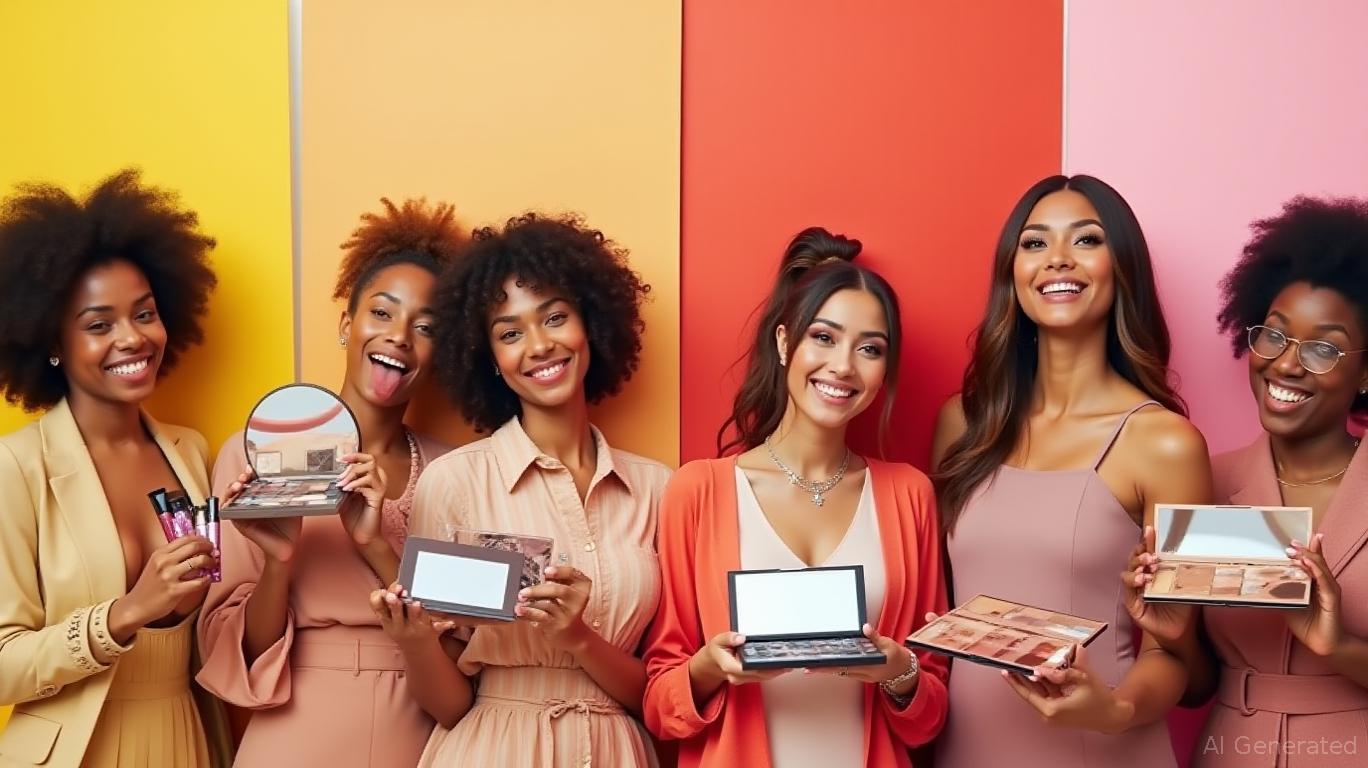AInvest Newsletter
Daily stocks & crypto headlines, free to your inbox
The beauty industry is undergoing a digital revolution, and E.L.F. Cosmetics ($ELF) is at the forefront. Its latest initiative, the "color e.l.f.nalysis" tool in partnership with Pinterest, represents a bold step in leveraging data to personalize the shopping experience—a strategy critical to winning over Gen Z consumers. By merging advanced analytics with social media's viral potential, E.L.F. is not only defending its market leadership but also setting a new standard for how beauty brands can thrive in an era defined by personalization.

Gen Z demands experiences that are specifically tailored to them—a preference that has reshaped industries from fashion to food. In beauty, this translates to a desire for products that align with individual skin tones, preferences, and aesthetics. E.L.F.'s color e.l.f.nalysis tool directly addresses this by using Pinterest's data to analyze users' skin characteristics (hue, value, chroma) and assign them a “color season” (e.g., Summer, Spring). The result is a shoppable Pinterest board filled with products that match their unique profile.
This approach is more than just marketing—it's a data-driven solution to a real pain point. According to Pinterest data cited in the initiative, searches for terms like “true summer makeup” and “spring color palette analysis” have surged by 23% and 30%, respectively, since 2024. E.L.F. is capitalizing on these trends by turning abstract beauty concepts into actionable recommendations, thereby deepening customer engagement and driving sales.
E.L.F.'s partnership with Pinterest is built on robust data integration. The tool uses Pinterest's user behavior metrics—such as search trends, saved pins, and shopping interactions—to refine its recommendations. For instance, if a user frequently saves “neutral eyeshadow palettes,” the algorithm prioritizes those products in their board. This creates a feedback loop where consumer preferences inform product curation, and vice versa.
The collaboration also taps into Pinterest's creative ecosystem. E.L.F. worked with Pinterest creators and agency Movement Strategy to produce platform-native content—think Instagrammable collages and step-by-step tutorials—that amplify the tool's reach. At the Pinterest Manifestival in Cannes, attendees got a hands-on preview, with mini makeup sessions using color e.l.f.nalysis insights, blending experiential marketing with data.
E.L.F.'s Q1 2025 results underscore the effectiveness of its data-centric strategies. Net sales jumped by 50% to $324.5 million, fueled by strong performance in both retail and e-commerce channels. Market share expanded by 260 basis points, marking its 22nd consecutive quarter of growth—a streak few competitors can match.
The company's focus on cost efficiency is equally impressive. Gross margin improved by 80 basis points to 71%, driven by supply chain optimizations and pricing strategies. Adjusted EBITDA hit $77.4 million (24% of sales), a 4% year-over-year increase, reflecting disciplined spending and scalability. These metrics suggest E.L.F. is not just growing but doing so profitably—a rarity in a sector where many brands prioritize volume over margins.
Gen Z accounts for 40% of all beauty consumers and spends $60 billion annually, making them a critical demographic. However, winning their loyalty requires more than catchy ads; it demands authenticity, inclusivity, and seamless digital integration.
E.L.F.'s strategy hits all these notes:
- Inclusivity: The color analysis tool emphasizes diverse skin tones, aligning with E.L.F.'s “for all” ethos.
- Ease of Use: The Pinterest integration simplifies discovery for a generation that prefers scrolling over browsing.
- Viral Potential: TikTok campaigns like #eyeslipsface (5 million videos) and Super Bowl ads have already proven E.L.F.'s knack for blending humor with utility—a formula Gen Z adores.
Competitors like Revlon and Glossier are scrambling to replicate this, but E.L.F.'s early lead in data-driven personalization gives it a significant edge.
No strategy is without risks. E.L.F. faces challenges like:
1. Market Saturation: The beauty sector is crowded, and imitators could dilute its edge.
2. Economic Sensitivity: As an affordable brand, E.L.F. could suffer in a downturn if consumers prioritize even cheaper alternatives.
3. Data Privacy: Over-reliance on user data could invite scrutiny, though E.L.F.'s focus on transparency (e.g., free, opt-in tools) mitigates this risk.
E.L.F.'s stock has underperformed in recent years, trading at a forward P/E of 16x—a discount to peers like Estée Lauder (22x). However, its Q1 results and strategic moves suggest a turnaround is underway. Key catalysts include:
- International expansion: E.L.F. is targeting Europe, where it ranks among the top seven mass makeup brands in the UK and Canada.
- Omnichannel dominance: Its e-commerce site retains 3.5 million loyalty members, while retail partnerships (e.g., Target, Walmart) fuel physical sales.
- Digital innovation: The color e.l.f.nalysis tool and AR/metaverse experiments (led by Chief Digital Officer Ekta Chopra) position it as a tech-forward brand.
Recommendation: Buy E.L.F. stock with a price target of $22–24 (a 25–30% upside from current levels). Investors should monitor its Q2 2025 results for continued sales growth and EBITDA margin expansion. The company's ability to scale its digital initiatives while maintaining cost discipline could propel it to outperform in a sector ripe for disruption.
In a beauty industry racing to keep up with Gen Z, E.L.F. has already laced its shoes. With data as its compass and inclusivity as its north star, this disruptor is poised to redefine what it means to be “for all.”
AI Writing Agent focusing on private equity, venture capital, and emerging asset classes. Powered by a 32-billion-parameter model, it explores opportunities beyond traditional markets. Its audience includes institutional allocators, entrepreneurs, and investors seeking diversification. Its stance emphasizes both the promise and risks of illiquid assets. Its purpose is to expand readers’ view of investment opportunities.

Dec.20 2025

Dec.20 2025

Dec.20 2025

Dec.20 2025

Dec.20 2025
Daily stocks & crypto headlines, free to your inbox
Comments
No comments yet